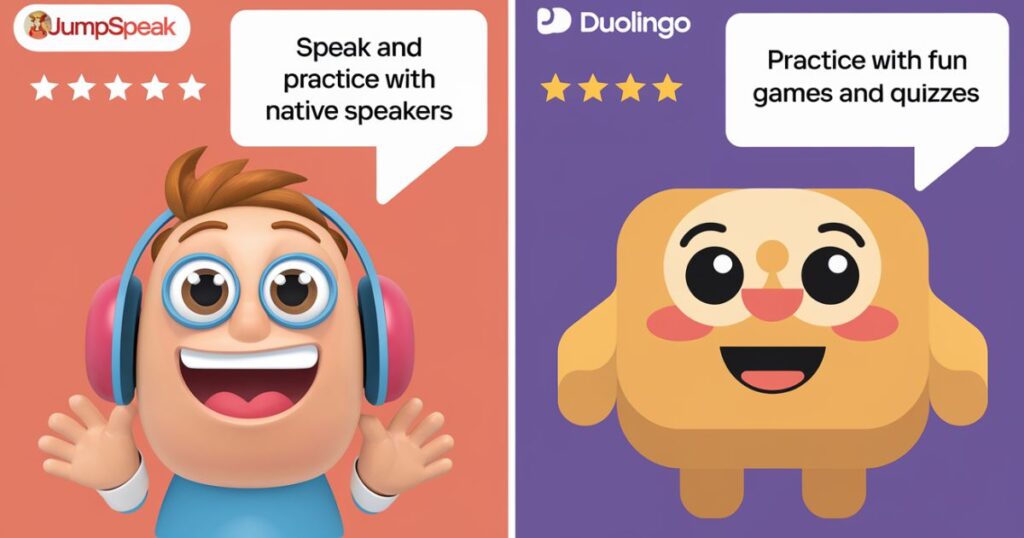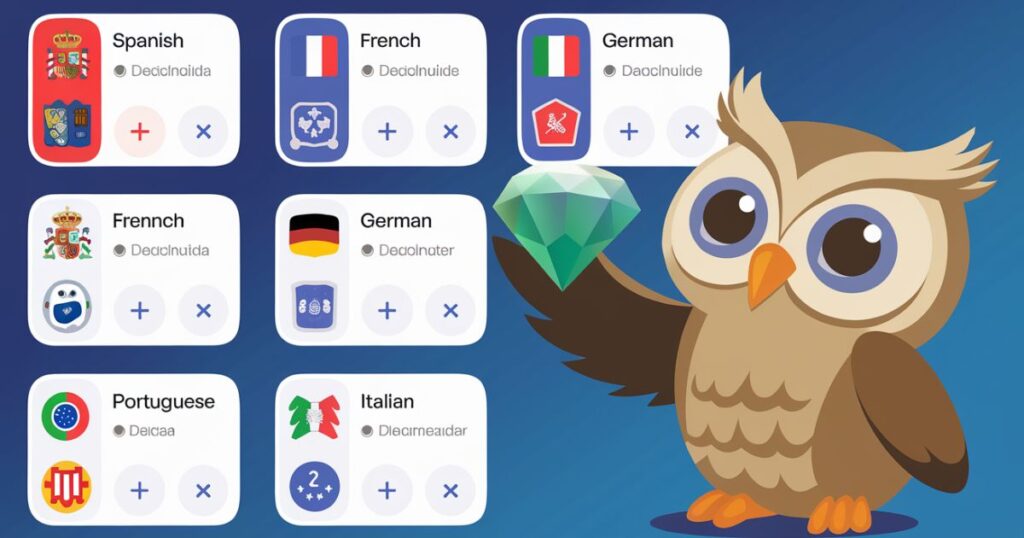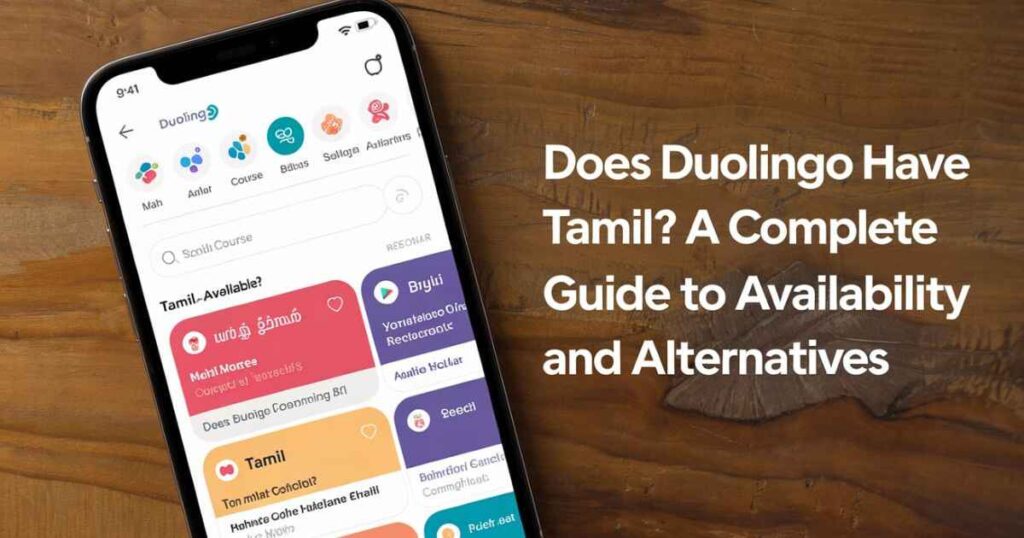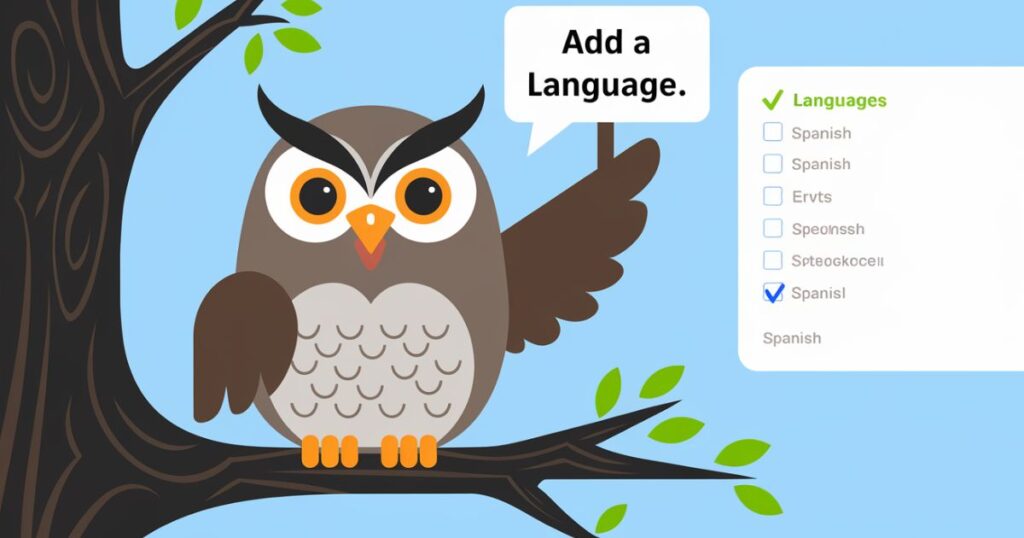The digital revolution has transformed how we learn languages, making even ancient tongues accessible through modern technology. Among these classical languages, Sanskrit stands out for its profound influence on Indian culture and its continuing relevance in fields ranging from spirituality to computer science.
While Duolingo has become synonymous with accessible language learning, many seekers of Sanskrit knowledge wonder about its availability on this popular platform.
The Modern Renaissance of Sanskrit
The resurgence of Sanskrit in the modern world presents a fascinating paradox. This ancient language, often called “the language of the gods,” has found new life in unexpected places. Silicon Valley engineers study its logical structures for insights into artificial intelligence, while yoga practitioners worldwide chant its mantras. The language that once echoed through the halls of ancient universities now resonates in modern classrooms and digital platforms.
Sanskrit’s influence extends far beyond its historical roots in the Indus Valley Civilization. Today, it serves as a bridge between ancient wisdom and modern innovation. Its precise grammatical structure makes it invaluable for natural language processing and computational linguistics. Major tech companies have even funded research into Sanskrit’s potential applications in artificial intelligence development.
Contemporary Applications
The practical applications of Sanskrit in modern times are surprisingly diverse. In the realm of programming, its logical structure provides insights into code organization and syntax development. Research has shown that Sanskrit’s grammatical precision and systematic approach to language construction offers valuable lessons for computer science.
| Field | Application of Sanskrit |
| Technology | Natural Language Processing, AI Development |
| Medicine | Ayurvedic texts, Medical terminology |
| Philosophy | Logic systems, Analytical frameworks |
| Linguistics | Comparative studies, Language evolution |
| Arts | Classical literature, Poetry composition |
More Post: Why Did Duolingo Reset My Progress? Guide to Causes and Solutions
Duolingo and Sanskrit: Current Status 2024
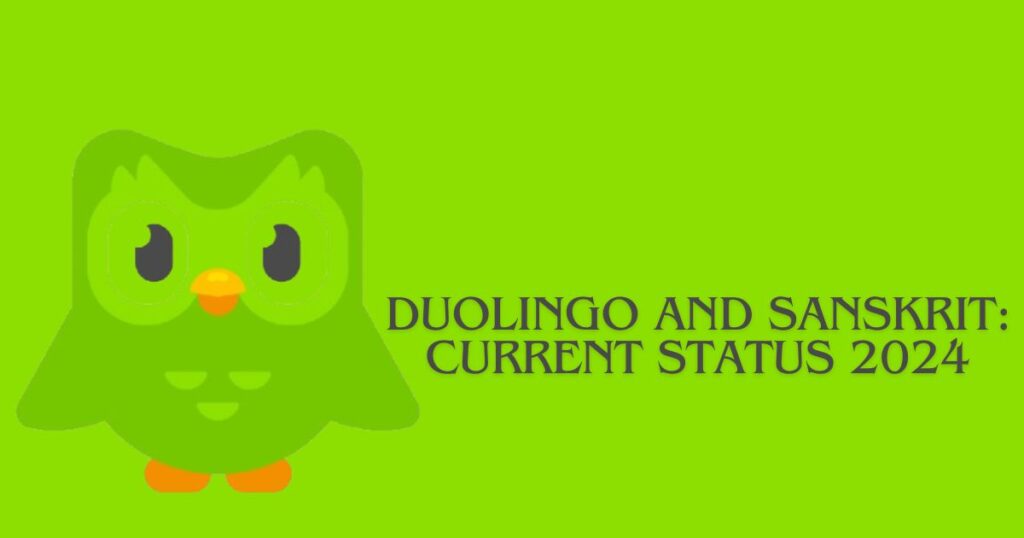
As we move through 2024, Duolingo continues to expand its language offerings, yet Sanskrit remains notably absent from its roster. This absence isn’t due to oversight but stems from a complex interplay of technical, cultural, and market factors. Understanding these challenges helps explain why this ancient language hasn’t yet found its way onto the world’s most popular language learning platform.
Technical Implementation Challenges
The digitization of Sanskrit presents unique technical hurdles that go beyond typical language implementation challenges. The Devanagari script, with its complex character combinations and diacritical marks, requires sophisticated rendering systems. Moreover, Sanskrit’s precise pronunciation rules, where the slightest variation can change meaning, demand advanced audio processing capabilities.
Market Dynamics and Development Priorities
The decision to develop language courses involves careful consideration of user demand and resource allocation. While interest in Sanskrit is growing, particularly among practitioners of yoga and students of Eastern philosophy, the current market size differs significantly from languages with millions of active learners.
Here’s a breakdown of key factors influencing platform development decisions:
| Factor | Impact on Sanskrit Implementation |
| User Demand | Growing but still niche compared to major languages |
| Technical Complexity | High due to script and pronunciation requirements |
| Development Resources | Significant investment needed for proper implementation |
| Maintenance Needs | Ongoing updates and content creation requirements |
More Post: When Was Duolingo Created? Most Popular Language Learning App
Leading Sanskrit Learning Alternatives
The absence of Sanskrit on Duolingo has led to the emergence of specialized platforms and innovative learning solutions. These alternatives often provide more targeted and culturally authentic learning experiences.
Traditional Learning Apps with Modern Twists
Little Sanskrit has revolutionized the traditional approach to Sanskrit learning by incorporating modern pedagogical methods with classical teaching techniques. The platform offers an immersive experience that goes beyond mere language acquisition, integrating cultural context and practical applications.
Sanskrit World takes a comprehensive approach to language instruction, combining traditional methodologies with modern technology. Their platform includes detailed explanations of Sanskrit’s connection to religious ceremonies, yoga practices, and philosophical concepts.
AI-Powered Learning Solutions
The integration of artificial intelligence in Sanskrit education represents a significant breakthrough. SanskritTutor AI employs advanced algorithms to analyze learner progress and adjust instruction accordingly. This personalized approach helps students navigate the language’s complexity while maintaining engagement.
Professional Teaching Platforms
The rise of online tutoring has created new opportunities for Sanskrit learning. Platforms like iTalki and Preply connect students with experienced Sanskrit teachers worldwide. These interactions provide valuable insights into pronunciation, grammar, and cultural context that might be missed in self-study programs.
| Platform | Key Features | Best For |
| iTalki | Live one-on-one instruction, Cultural exchange | Serious learners |
| Preply | Structured courses, Flexible scheduling | Beginners |
| Vedic Tutors | Traditional teaching, Classical texts | Advanced students |
Innovative Learning Methods in Sanskrit Education
The digital age has ushered in groundbreaking approaches to Sanskrit instruction. Modern technology, combined with traditional teaching methods, has created a rich ecosystem for language learning that would have been unimaginable just decades ago.
Digital Tools for Comprehensive Sanskrit Mastery
Modern Sanskrit learners benefit from an array of sophisticated digital tools. Advanced script recognition software now allows students to practice writing Devanagari characters and receive instant feedback. Voice recognition technology helps perfect pronunciation, while spaced repetition systems optimize vocabulary retention.
Here’s a comprehensive look at the digital toolkit available to modern Sanskrit students:
| Tool Category | Features | Learning Benefits |
| Script Practice | Interactive writing exercises, Real-time correction | Master Devanagari script |
| Pronunciation | Audio analysis, Native speaker comparisons | Perfect pronunciation |
| Grammar | Interactive exercises, Progress tracking | Understanding complex rules |
| Vocabulary | Flashcard systems, Context learning | Building word knowledge |
The Role of Virtual Communities
The emergence of online Sanskrit communities has transformed solitary study into a collaborative experience. These virtual spaces facilitate knowledge sharing and cultural exchange, creating immersive learning environments that extend beyond traditional classroom boundaries.
Advanced Learning Strategies
Success in Sanskrit studies requires a well-structured approach combining various learning methods. Modern learners can benefit from both traditional wisdom and contemporary educational research.
Integration with Classical Studies
Sanskrit’s deep connection to classic texts and religious ceremonies provides unique learning opportunities. Students often find that studying texts from traditions like Hinduism, Buddhism, and Jainism enhances their language comprehension while providing cultural context.
Here’s an effective progression for serious Sanskrit students:
- Master basic script and pronunciation
- Build fundamental vocabulary through daily practice
- Study essential grammar structures
- Begin reading simple texts
- Progress to classical literature
- Engage in composition and translation
Technology-Enhanced Learning Methods
Modern technology has revolutionized how we approach Sanskrit studies. Virtual reality applications now offer immersive experiences in ancient Indian universities, while augmented reality tools help visualize complex grammatical relationships.
The Future Landscape of Sanskrit Learning
The future of Sanskrit education looks increasingly dynamic, with several emerging trends shaping its evolution:
Technological Innovations
Artificial intelligence and machine learning are transforming Sanskrit pedagogy. New developments include:
- Neural network-based translation tools
- Virtual reality temples and learning environments
- Augmented reality script visualization
- AI-powered personalized learning paths
Cultural Integration
Sanskrit’s revival extends beyond language learning to cultural preservation and modern applications:
- Integration with modern mindfulness practices
- Application in computational linguistics
- Use in contemporary arts and music
- Influence on modern Indian languages
Making the Most of Available Resources
Success in Sanskrit learning requires a strategic approach to resource utilization. Here’s a comprehensive strategy for maximizing learning effectiveness:
Structured Learning Approach
The key to mastering Sanskrit lies in systematic progression through various learning stages:
| Learning Stage | Focus Areas | Recommended Resources |
| Beginner | Script, Basic Vocabulary | Digital apps, Flashcards |
| Intermediate | Grammar, Simple Texts | Online tutoring, Language exchange |
| Advanced | Classical Literature, Composition | Academic courses, Sanskrit forums |
Community Engagement
Engaging with the Sanskrit learning community enhances the educational experience through:
- Regular conversation practice
- Cultural exchange opportunities
- Shared learning resources
- Collaborative projects
The Impact of Sanskrit in Modern Times
Sanskrit’s influence extends far beyond traditional boundaries, touching various aspects of contemporary life:
Professional Applications
The study of Sanskrit has found surprising applications in modern fields:
- Computer programming and logic design
- Linguistic research and development
- Cultural preservation initiatives
- Educational technology
Personal Development
Many learners report benefits beyond language acquisition:
- Enhanced logical thinking abilities
- Deeper cultural understanding
- Improved concentration
- Connection to ancient wisdom
FAQ’s About Sanskrit Learning
Q: Does Duolingo offer a Sanskrit language course?
No, Duolingo does not currently offer Sanskrit among its language courses. This ancient Indian language remains absent from the platform’s offerings in 2024.
Q: What is the current status of Sanskrit on Duolingo’s platform?
While Duolingo continues to expand its language offerings, Sanskrit isn’t currently in development. The platform focuses on languages with larger global user bases.
Q: What are some alternative platforms for learning Sanskrit online?
Little Sanskrit, Sanskrit World, iTalki, and Memrise offer comprehensive Sanskrit courses. These platforms provide specialized tools for learning the ancient language effectively.
Q: What are the key reasons behind Duolingo’s absence of a Sanskrit course?
Technical challenges in implementing the complex script, limited global demand, and resource allocation priorities are the main factors behind Sanskrit’s absence.
Q: What are the unique features of Memrise and Liberation Philology Sanskrit for learning Sanskrit?
These platforms offer spaced repetition systems, interactive script practice, pronunciation guides, and culturally authentic content tailored specifically for Sanskrit learners.
Q: How do platforms like iTalki and Preply facilitate learning Sanskrit through one-on-one tutoring?
These platforms connect students with verified Sanskrit tutors for personalized lessons, offering flexible scheduling and customized learning plans via video calls.
Q: What are the interactive approaches used by Drops and Ling for learning Sanskrit vocabulary and phrases?
Drops and Ling use visual learning methods, gamification, and short, focused lessons to teach Sanskrit vocabulary and basic conversational phrases.
Q: How do language exchange apps like HelloTalk and Tandem support Sanskrit learning?
These apps connect Sanskrit learners with native speakers and enthusiasts for language exchange, practice conversations, and cultural discussions.
Q: In which app can I learn Sanskrit?
Little Sanskrit, Sanskrit World, and SanskritTutor AI are popular apps offering comprehensive Sanskrit courses with interactive features and structured lessons.
Q: Does Duolingo support Indian languages?
Yes, Duolingo offers Hindi and some regional Indian languages, but Sanskrit is not among them currently.
Q: Is Sanskrit a rare language?
While Sanskrit has few native speakers today, it remains actively studied for academic, cultural, and religious purposes worldwide.
Q: What does Duolingo not teach?
Duolingo doesn’t teach several ancient languages including Sanskrit, Latin (except in specific regions), and Classical Greek, along with many regional languages.
Conclusion
While Duolingo may not currently offer Sanskrit, the digital age has provided numerous effective alternatives for learning this ancient language. From AI-powered apps to traditional tutoring platforms, learners have access to a rich ecosystem of resources that cater to various learning styles and goals.
The journey of learning Sanskrit represents more than just language acquisition; it’s a gateway to understanding thousands of years of human wisdom, scientific thought, and cultural heritage. Whether your interest stems from academic pursuit, spiritual practice, or personal growth, the current digital landscape offers unprecedented opportunities to connect with this profound language.
As technology continues to evolve and interest in Sanskrit grows, we can expect even more innovative learning solutions to emerge. The future of Sanskrit education looks bright, with new tools and methods making this ancient language more accessible than ever to modern learners worldwide.
Remember, the key to success lies not in waiting for the perfect platform but in starting your journey with the excellent resources already available. Whether through online learning platforms, traditional tutoring, or a combination of methods, the path to Sanskrit mastery is more accessible today than at any point in history.

Welcome to DuolingoAbout.com! Your go-to hub for expert tips, tricks, and guides to mastering Duolingo. Simplify your language-learning journey with curated content designed for learners at all levels.


